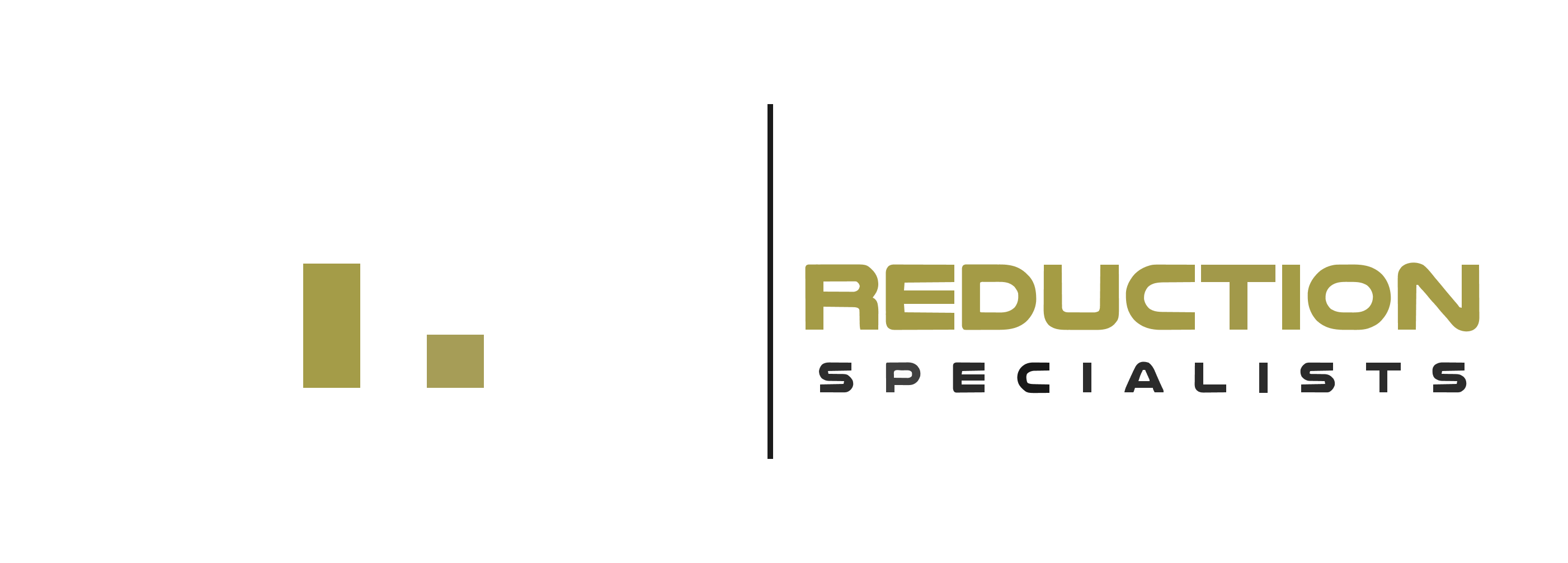The Ultimate Guide to R&D Tax Credits: Boost Innovation While Saving Money
Are you leaving money on the table by not claiming R&D tax credits for your innovative business activities? The R&D tax credit is one of the most generous yet underutilized tax incentives, with the federal government offering over $12 billion annually to innovative businesses. Whether you’re developing new products, improving processes, or creating cutting-edge software, you could be eligible for substantial tax savings. In this comprehensive guide, we’ll demystify R&D tax credits and show you how to turn your innovation investments into valuable tax benefits. From understanding the four-part qualification test to identifying eligible expenses, we’ll walk you through everything you need to know. Ready to discover how your business can save money while fostering innovation? Let’s explore the world of R&D tax credits and unlock the potential savings waiting for you.
Key Takeaways:
- – The federal government provides over $12 billion annually in R&D tax credits, making it one of the most significant domestic tax credits available to innovative businesses.
- – Qualifying activities include new product development, process improvements, software development, and various research activities that meet the four-part test criteria.
- – Businesses can apply these credits against their federal tax bill, and eligible start-up companies can even use them to offset payroll taxes.
- – The program supports various industries beyond traditional research fields, including manufacturing, software development, and applied sciences.
- – Proper documentation and meticulous record-keeping are essential for successfully claiming these tax benefits.
Understanding R&D Tax Credits
Research and Development (R&D) tax credits are powerful financial incentives designed to reward companies investing in innovation. These credits offer a dollar-for-dollar reduction in tax liability, making them more valuable than standard deductions.
What Makes R&D Tax Credits Special
R&D tax credits stand out because they directly reduce your tax bill rather than just lowering taxable income. Since becoming permanent in 2015, they’ve provided stable support for businesses conducting qualified research activities. The federal government allocates over $12 billion annually to this program, with no upper limit on available credits.
Key Benefits for Businesses
These credits deliver substantial financial advantages to innovative companies. They can:
– Offset up to 20% of qualifying research expenses
– Reduce both federal and state tax obligations
– Carry forward unused credits for up to 20 years
– Apply against payroll taxes for eligible startups
Recent Changes and Updates
The Tax Cuts and Jobs Act brought significant changes to R&D tax credits. Starting in 2022, research costs must be amortized over 5 years for domestic research and 15 years for foreign research, replacing the previous immediate deduction option. However, the core credit structure remains intact, continuing to incentivize innovation.
Industry Applications
While many assume R&D credits are limited to scientific research, they actually span numerous industries including:
– Software development
– Manufacturing
– Life sciences
– Engineering
– Architecture
– Financial services
The key isn’t the industry but rather the nature of the work being performed and its alignment with qualifying criteria.
???? Key Takeaway: R&D tax credits offer significant financial benefits across various industries, providing dollar-for-dollar tax reduction for qualifying research activities while supporting long-term innovation and growth.
Qualifying Research Activities
Understanding the Four-Part Test
To qualify for R&D tax credits, your research activities must pass a crucial four-part test established by the IRS. This test ensures that your activities genuinely contribute to technological or scientific advancement.
The first requirement is that your research must aim to create new or improved business components. This includes developing better products, processes, software, techniques, or formulas. The second part focuses on eliminating technical uncertainty – you must identify specific challenges that need solving through research.
The third element requires using hard sciences like engineering, physics, biology, or computer science. Finally, you must follow a systematic process of experimentation to evaluate different alternatives and solutions.
Examples of Qualifying Activities
Many business activities can qualify for R&D tax credits across various industries. In manufacturing, developing new production processes or improving existing ones often qualifies. Software companies can claim credits for creating new applications or enhancing current software functionality.
For biotech firms, laboratory research and clinical trials typically meet the criteria. Engineering companies often qualify through their work on new designs or prototypes. Even traditional industries like agriculture can benefit when developing new farming techniques or crop varieties.
However, certain activities are explicitly excluded. These include:
– Market research and surveys
– Routine quality control testing
– Management studies
– Consumer preference testing
– Advertising and promotional activities
Remember that the research must be conducted within the United States to qualify for federal tax credits. Additionally, the work should be focused on developing new or improved functionality rather than just aesthetic changes.
???? Key Takeaway: R&D tax credits require activities to pass a four-part qualification test and must involve systematic experimentation in hard sciences, excluding routine business operations and market research.
Eligible Expenses and Costs
Understanding what expenses qualify for R&D tax credits is crucial for maximizing your benefits. Let’s explore the main categories of costs that are eligible under this program.
Wages and Salaries
Employee wages form a significant portion of qualifying expenses. This includes salaries paid to staff directly involved in research activities, such as engineers, scientists, and developers. Even supervisors who oversee these activities can have a portion of their wages qualify.
Supply Costs
Research supplies and materials used in the development process are eligible expenses. This encompasses everything from raw materials and prototypes to specialized equipment. However, remember that capital equipment purchases don’t qualify – only the materials consumed during the R&D process count.
Contract Research Expenses
If you hire third-party contractors or consultants for research activities, these costs can qualify. However, there’s a catch – only 65% of contract research expenses are eligible for the credit. Make sure your contractors perform their work within the United States to maintain eligibility.
Cloud Computing and Software Costs
In today’s digital age, expenses related to cloud computing services and software development tools can qualify. This includes costs for development environments, testing platforms, and specialized software licenses used directly in R&D activities.
Basic Research Payments
Payments made to qualified research institutions, like universities or scientific research organizations, can be eligible. These expenses must be related to fundamental research that advances your field rather than routine testing or market research.
???? Key Takeaway: R&D tax credits cover a wide range of expenses including wages, supplies, contract research, cloud computing, and basic research payments – but understanding specific eligibility requirements for each category is essential for maximizing your benefits.
Calculation Methods and Benefits
Regular Research Credit (RRC)
The Regular Research Credit method is the traditional approach to calculating R&D tax benefits. Under this method, businesses can claim up to 20% of their qualified research expenses above a base amount. This base amount is calculated using historical data from the 1984-1988 period, making it challenging for newer companies.
Alternative Simplified Credit (ASC)
For companies finding the RRC calculation complex, the Alternative Simplified Credit offers a more straightforward approach. The ASC allows businesses to claim 14% of qualified research expenses that exceed 50% of the average QREs from the previous three years. This method is particularly beneficial for companies with incomplete historical records.
Financial Impact
R&D tax credits can significantly impact your bottom line. These credits directly reduce your tax liability dollar-for-dollar, unlike deductions that only reduce taxable income. For startups and small businesses, the credits can offset up to $250,000 in payroll taxes annually. Larger corporations often see millions in tax savings through strategic R&D investments.
State-Level Benefits
Beyond federal credits, most states offer additional R&D incentives. These state-level benefits can range from 5% to 20% of qualifying expenses, effectively doubling your potential tax savings. Some states even offer refundable credits, providing cash benefits even if you don’t have tax liability.
???? Key Takeaway: R&D tax credits offer substantial financial benefits through two calculation methods – RRC and ASC, with potential savings at both federal and state levels, making strategic R&D investment highly advantageous for businesses.
Special Provisions for Different Businesses
Small Businesses and Startups
Small businesses and startups can benefit significantly from special R&D tax credit provisions. Companies with less than $5 million in gross receipts can apply up to $250,000 of their R&D credit against their payroll tax liability. This is particularly valuable for startups that may not yet have income tax liability.
These businesses can claim the credit for up to five years, providing crucial financial support during their growth phase. The ability to offset payroll taxes makes the R&D credit accessible even to pre-revenue companies actively engaged in innovation.
Manufacturing and Technology Companies
Manufacturing and technology firms often have unique opportunities within the R&D tax credit framework. These companies can claim credits for developing new production processes, improving existing manufacturing methods, or creating innovative software solutions.
The credit covers activities like prototype development, testing new materials, and implementing automation systems. Technology companies can include software development costs, including cloud computing and artificial intelligence initiatives.
Service-Based Organizations
Service-based businesses aren’t left out of R&D tax benefits. Professional service firms, including engineering companies, architectural firms, and software development agencies, can qualify for credits when they develop new methodologies or technical solutions for clients.
These organizations can claim credits for time spent on innovative problem-solving, developing new service delivery methods, or creating custom solutions that advance their field’s technical knowledge.
Research Institutions
Research institutions receive special consideration under R&D tax credit provisions. They can benefit from the basic research credit, which applies to payments made to qualified research institutions for fundamental research activities.
This provision encourages collaboration between businesses and research organizations, fostering innovation across sectors while providing tax benefits to supporting companies.
???? Key Takeaway: Different business types have unique R&D tax credit opportunities, from startups offsetting payroll taxes to research institutions claiming basic research credits, making innovation financially rewarding across various sectors.
Industry-Specific Applications
The R&D tax credit applies across numerous sectors, offering substantial benefits for companies engaged in innovative activities. Let’s explore how different industries can leverage these credits effectively.
Manufacturing and Engineering
Manufacturing companies often qualify through process improvements, new product development, and automation initiatives. This includes designing new production methods, testing prototypes, and developing custom machinery. Engineers working on improving manufacturing efficiency or creating new products can have their wages qualify as research expenses.
Software Development
Tech companies can claim credits for developing new software applications, improving existing platforms, or creating innovative algorithms. Activities like beta testing, debugging complex code, and developing new programming techniques typically qualify. Cloud computing innovations and cybersecurity developments are particularly relevant in today’s digital landscape.
Life Sciences and Healthcare
Pharmaceutical companies, biotech firms, and medical device manufacturers can claim credits for clinical trials, drug development, and medical technology innovations. This extends to developing new treatment methods, improving medical devices, and conducting laboratory research for new therapeutic solutions.
Agriculture and Food Processing
Agricultural businesses can qualify through developing new farming techniques, creating improved crop varieties, or implementing sustainable farming practices. Food processors might claim credits for developing new preservation methods, creating innovative packaging solutions, or improving food safety protocols.
Construction and Architecture
These sectors can claim credits for developing new building materials, creating energy-efficient designs, or implementing innovative construction methods. Activities like structural engineering experiments, sustainable building techniques, and advanced modeling systems often qualify.
Energy and Environmental
Companies in the energy sector can benefit from credits for developing renewable energy solutions, improving energy efficiency, or creating new environmental protection technologies. This includes research into solar panels, wind turbines, and energy storage systems.
???? Key Takeaway: R&D tax credits are available across diverse industries, from manufacturing to technology, with each sector having unique qualifying activities that can lead to significant tax savings while promoting innovation.
Maximizing Your R&D Tax Benefits
Unlocking the full potential of R&D tax credits requires strategic planning and thorough documentation. Let’s explore proven strategies to optimize your benefits while maintaining compliance.
Strategic Documentation Practices
Maintaining detailed records is crucial for maximizing your R&D tax benefits. Keep comprehensive logs of research activities, including project timelines, employee time sheets, and experimental outcomes. Create a systematic filing system that organizes all relevant documents, making them easily accessible during audits.
Timing Your Claims Effectively
Consider the optimal timing for your R&D tax credit claims. You can look back up to three years to claim previously unclaimed credits. This retrospective approach can help identify overlooked opportunities and maximize your tax savings.
Leveraging State-Level Benefits
Don’t limit yourself to federal credits alone. Many states offer additional R&D tax incentives that can significantly boost your overall benefits. Research your state’s specific programs and requirements to take advantage of these complementary opportunities.
Professional Guidance
Working with experienced tax professionals who specialize in R&D credits can help identify qualifying activities you might have missed. They can also ensure proper documentation and compliance, reducing the risk of audit complications.
Regular Review and Updates
Implement a regular review process to evaluate your R&D activities and documentation methods. Stay informed about tax law changes and adjust your strategies accordingly. This proactive approach helps maintain compliance while maximizing benefits.
???? Key Takeaway: Maximize R&D tax benefits through meticulous documentation, strategic timing, state-level opportunities, professional guidance, and regular reviews of your claiming process.
Conclusion
As we’ve explored, R&D tax credits represent a powerful opportunity for innovative businesses to recoup significant investments while driving progress forward. By understanding the four-part test, identifying qualifying activities, and maintaining meticulous record-keeping, you can transform your research and development efforts into valuable tax savings. Remember, whether you’re a startup developing cutting-edge software or an established company improving manufacturing processes, these credits are designed to reward your innovation. Don’t let this underutilized tax incentive slip through your fingers. With potential savings that could significantly impact your cash flow and fuel future development activities, taking action now is crucial. Consider partnering with qualified tax advisors who can help navigate the complexities of R&D tax credits and maximize your benefits. By leveraging these incentives effectively, you’re not just reducing your tax burden – you’re investing in your company’s future and contributing to broader economic growth through innovation.
FAQs
Can startups claim R&D tax credits if they haven’t generated any revenue yet?
Yes, startups can claim R&D tax credits even without revenue. The PATH Act allows qualified small businesses to apply up to $250,000 of their R&D credit against payroll taxes for up to five years, providing vital cash flow support during early development stages.
How far back can I claim R&D tax credits?
You can typically claim R&D tax credits retroactively for up to three tax years from the current filing year. This allows businesses to recover previously unclaimed credits through amended returns, potentially resulting in significant tax savings.
What documentation is required to support an R&D tax credit claim?
Essential documentation includes project records, payroll data, contractor agreements, and detailed descriptions of research activities. Maintain meticulous record-keeping of experimental processes, test results, and development timelines to support your claim during potential IRS reviews.
How does the Alternative Simplified Credit (ASC) method differ from the regular method?
The ASC method offers a simplified approach to calculating R&D credits, using 14% of qualified research expenses that exceed 50% of the average QREs for the previous three years. This method is often preferred when historical data is limited or complex.
What happens if my company gets acquired – do we lose the R&D tax credits?
During an acquisition, existing R&D tax credits typically transfer to the acquiring company, subject to certain limitations. However, the subsidiary entity must continue to meet eligibility requirements to utilize these credits in future tax years.
Are software development activities eligible for R&D tax credits?
Yes, software development activities can qualify for R&D tax credits if they meet the four-part test criteria. This includes developing new features, improving existing functionality, or creating innovative solutions that advance the field of computer science.







